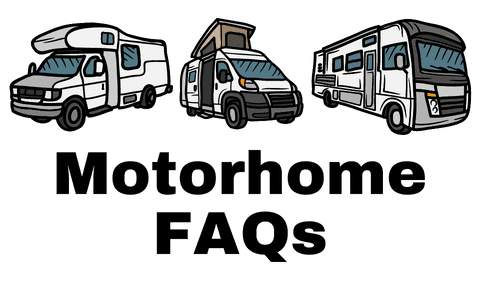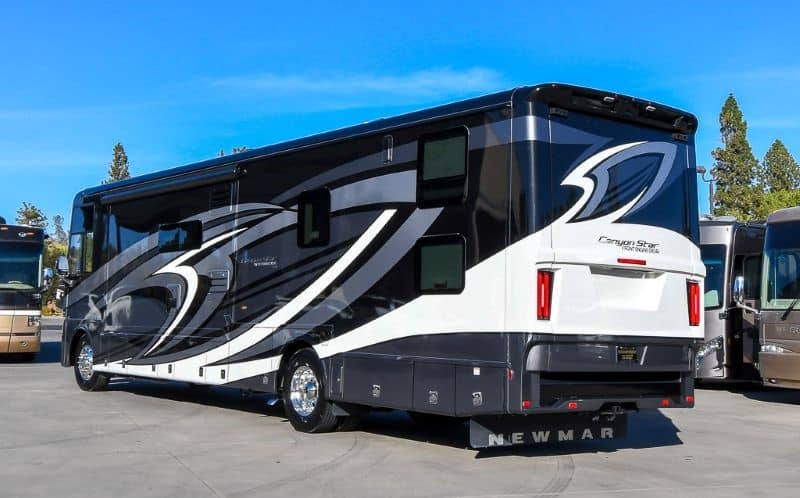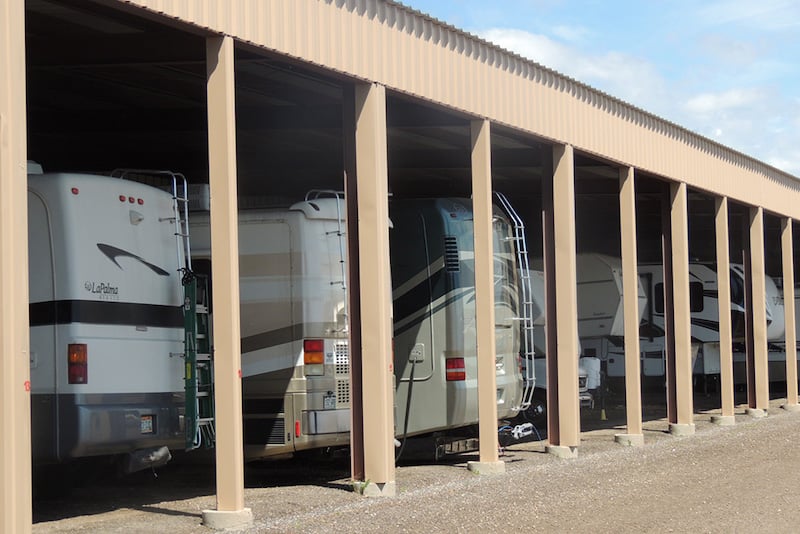You can fill your RV tires at a gas station air pump, but it isn’t always the best experience, and most times, the compressors don’t have the “oomph” for huge, high-pressure tires. So, what’s an RVer to do?
If you’ve ever had to stop and fill your RV tires at a gas station, you probably know what a pain it can be. Parking is usually pretty tight, and the air compressors aren’t optimal for filling up RV tires.
If you have a large motorhome, the 85 to 100 lb pressure range is often too much for the overworn, ancient air pumps that often look like they were installed in the late Cretaceous period. The fact that some have a modified debit card scanner doesn’t help the aesthetic any.
In this article, we’ll discuss filling your RV tires at a gas station. You’ll also learn about why it’s a good idea to carry an RV air compressor with you. We’ll show you an excellent air compressor brand that’s easy to store, yet has the air pressure to fill up any motorhome tire.
Can You Fill RV Tires at Gas Stations?
You can fill RV tires at gas stations; it may not be an experience worth writing home about, especially if you’re in a large Class A motorhome. These aren’t premium compressors, after all, and they can’t always keep up with what you need to fill all of your tires to recommended pressures.
Truck stops, tire stores, and RV dealerships typically have 150 PSI (Pounds per Square Inch) hoses, making them a better choice, assuming you have one nearby. However, when you’re on the road, that opportunity isn’t always available, and you have to use what you can, where you can.
Many truck gas stations have air pumps that can handle the higher pressure ranges and the higher volume of air. Most times, they’re free as well, especially if you’re traveling through California.
How Do You Air Up a Motorhome Tire?
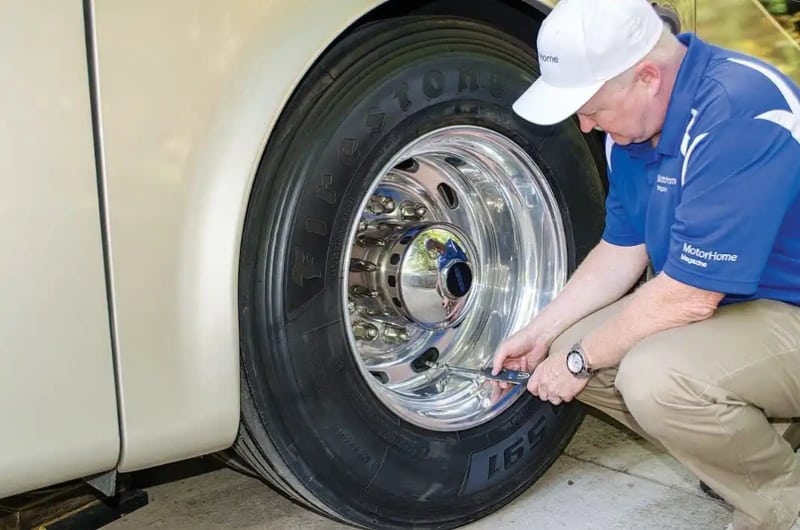
You air up a motorhome tire the same way you would most vehicles. Luxury diesel pushers with air brakes and suspension systems usually have their own built-in compressors. But, even if you do have the built-in compressors, idling a diesel engine in a campground isn’t the best RV etiquette.
The low-pressure indicator in the cab is a good way to start a low-pressure headache. It’s time to get the tires back up to snuff, and it’s always a hassle for RV owners.
The best way to air up the tires on your motorhome is to purchase your own air compressor. Now, there are a ton of these on the market—everything from tiny, portable compressors to gigantic ones that come with a dolly welded to the tank.
But if you’re sick of being dependent on sporadic truck stops and trying to gauge tire pressures when your tires are hot, there’s another solution. VIAIR Air Compressors are popular with RVers, and motorhome owners specifically.
VIAIR manufactures several air compressors for motorhomes:
- VIAIR 450P – RVS: Class A Motorhomes
- VIAIR 400P – RVS: Class C Motorhomes
- VIAIR 89P – RVS: Class B Motorhomes
- VAIAR 300P – RVS: Towables
Whether you’re using an onboard air compressor, one of the above-listed VIAIR compressors, or a truck stop air compressor, the process is pretty much the same.
- Uncap your valve stem
- Don’t add any air to your tire before taking a current reading of how much air pressure you have first.
- Read the current air pressure on an integrated air gauge (avoid the truck stop’s air gauge if possible or use a separate, more reliable air gauge)
- Pull the trigger on the air compressor hose stem
- Unless you’re very low on air pressure, don’t hold the trigger for long periods
- Release the trigger and read your air gauge
- Continue pulling the trigger and releasing it to check the pressure until the tire is within spec
- If the pressure is too high, there should be an air-release valve next to the trigger
- Don’t forget to cap your valve stem when you’re finished
Dual tires may require an extender on the end of your air compressor hose. VIAIR compressors come with an extender, but it’s always a good idea to line up the inner tire’s valve stem so it pokes through the wheel on the outer tire. The more accessible, the better.
What PSI Should I Fill My RV Tires To?
The PSI you should fill your RV tires to is the required level indicated on the inner sidewall. Sometimes it’s in very tiny letters and is often not in an offset color, so it stands out from the rest of the tire. It’s also a good idea to look over the RV tire inflation tables and codes.
Also, RV manufacturers have to put the recommended tire pressure information on the RV data plate. These “recommended” pressures are listed under the assumption that the motorhome will be under max load. Plus, that information goes out the window if you don’t have the original tires installed.
There are a few more important factors to consider. First, to get the most accurate tire pressure, you need to check them when the tires are cold. Second, the PSI listed on the tire’s sidewall is not the max pressure. It’s the minimum pressure based on the tire’s max load rating.
Fortunately, you only have to worry about never exceeding 10 PSI over the listed rating on the sidewall.
Should RV Tires Be Inflated to Max PSI?
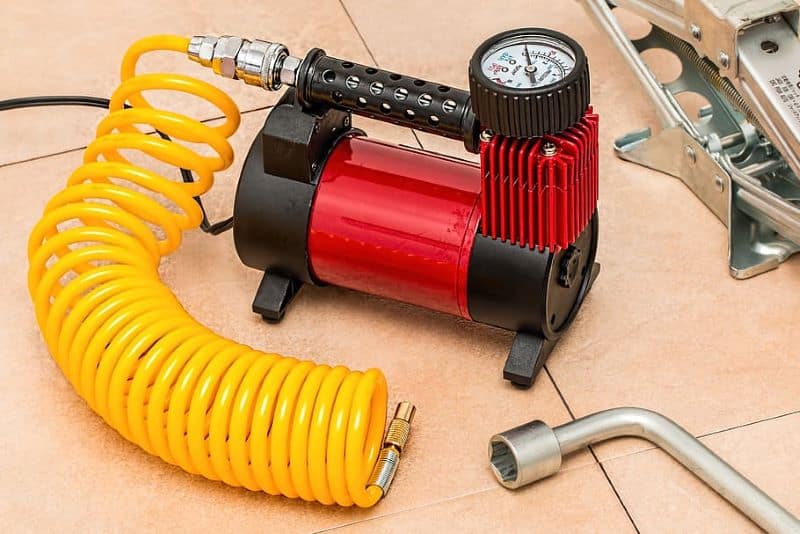
As mentioned above, the PSI on the sidewall is a good indicator of where the tire needs to be, though the load on the tire does make a difference. It never hurts to go a few PSI over the tire’s listed level. In fact, it’s much safer than the PSI level being lower than the recommended rating.
How Do You Fill a Tire with Air from a Gas Station Pump?
Fill your RV tires at a gas station pump by not doing anything at first. Go inside the store and use the restroom. Grab a snack. Eat lunch in the parking lot. Let those tires cool off a bit. The more they cool off, the better. Hot tires will often display a higher PSI than they will when cold, which throws off the true level.
Also, beware of the truck stop/gas station’s built-in air gauge. Bring your own unless you have no other choice. Extensive use wears out the air gauges, making them no longer accurate. Plus, manufacturers do not design them with RVs in mind, so it’s always better to use your own.
Park as close to the pump as possible. Those curly hoses are not as long as they look. If you have to pay for the air, you want to make sure you can quickly move from tire to tire without having to move the motorhome again.
If the pump has a PSI setting, set it to the level indicated on your RV tires. Also, before you insert any coins, uncap your valve stems so you aren’t wasting any more time than necessary.
What’s the Best Air Compressor to Buy for Your Motorhome?
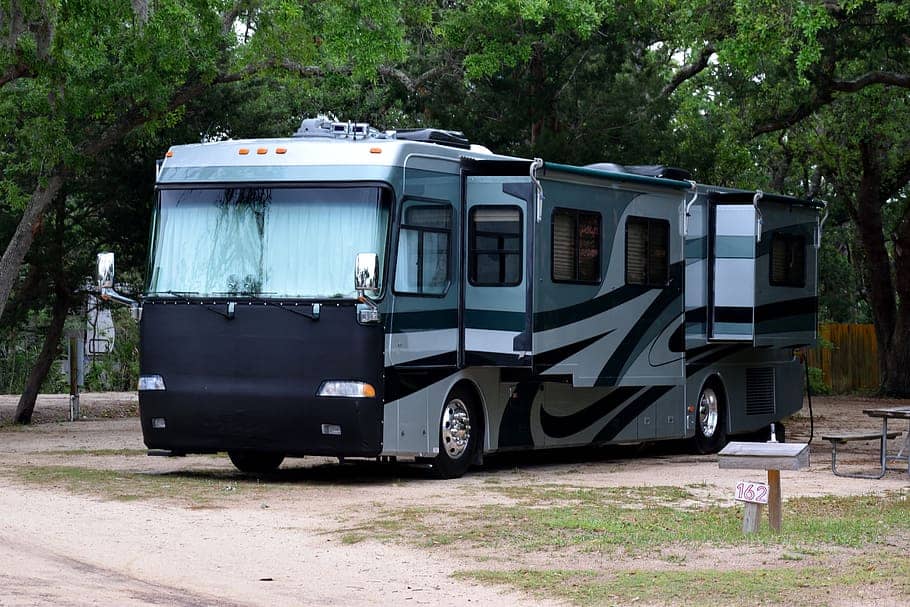
VIAIR designs their air compressors with RVers in mind, making them the best on the market right now. As we mentioned above, there are three types that are primarily for motorhomes, though one or two of the three will work with travel trailers just fine.
RVers love them, and they’re very convenient. In fact, those with diesel pushers with onboard air compressors still prefer a VIAIR air compressor because of the convenience and the aforementioned campground etiquette.
If you’re in the market for one and tired of hunting down Pilot/Flying Js, Love’s, and TA truck stops, they’re simple enough to find online at TechnoRV or on Amazon.
Frequently Asked Questions
1. What size air compressor do I need to inflate motorhome tires?
For Class A Motorhomes look for the VIAIR 450P. For Class C RVs and larger towables look for the VIAIR 400P. For smaller Class C RVs and smaller towables look for the VIAIR 300P. For smaller Class B camper vans and smaller towables, TechnoRV and VIAIR recommend the VIAIR 89P.
Here’s a video from Techno RV to help explain which VIAIR is right for you!
2. How do you check the air in dual tires on a motorhome?
Depending on how the inner tire’s valve stem is situated, you may need an extender. It’s a good idea to mount the outer tire so the inner valve stem is exposed. This allows you to reach through easily.
3. Can you drive an RV on one flat dually tire?
Unless you have absolutely no choice (being stuck in heavy traffic with no shoulder to pull over onto), you should not drive an RV with one flat dually tire. Remember, the PSI in these tires is recommended based on load, and now you have one tire taking on twice the load.
It’s okay to drive as far as the next exit and find a big parking lot where you can safely work on fixing the tire. After all, your safety is paramount!
4. Can I put regular air in my tires if I have nitrogen?
You can put regular air in your nitrogen-filled tires in an emergency, but it’s not recommended. It’s certainly safe to do so. However, you will have to entirely purge the tire later on and refill it with nitrogen.
5. Where’s the best place to fill up motorhome tires?
For the most part, truck stops have air pumps designed for semi trucks. However, having your own air compressor is far more convenient and covers you in case of an emergency.
Final Thoughts On Filling Your RV Tires at a Gas Station Pump
In a perfect world, you would fill your RV tires at a gas station as a last resort. But, since we don’t live in an ideal world, we have to use what we have. It’s a pain, but sometimes, it has to be done.
Your best bet is to get your own VIAIR air compressor so you always have a highly dependable air compressor that can operate on nothing more than a car battery.
Related Reading:
1. Can You Patch or Plug RV Tires?
2. 9 Best Air Compressors for RV Tires
3. Should You Fill Your Travel Trailer Tires With Nitrogen?
4. How Much Can a Class A Motorhome Tow?
About the Author:
Thomas Godwin is a full-time freelance writer with a BFA in Creative Writing, a U.S. Marine, and an avid outdoorsman.
When he’s not writing, he’s raising chickens and Appleyard ducks. Thomas also constructs teardrop campers (attempting to anyway) and kayaks the Blackwater River with his wife, two daughters, and his Dobermans.

